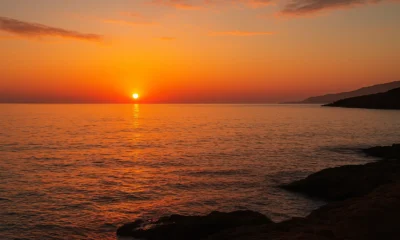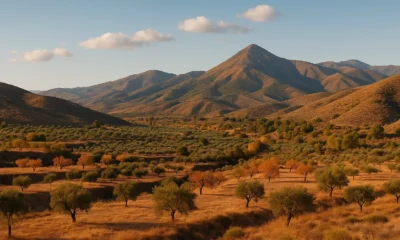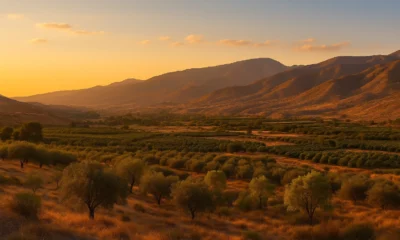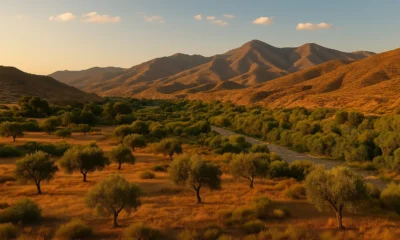Almeria News
Huebro’s Virgen del Rosario: Annual Pilgrimage and Festivities
Published May 7, 2025 | Category: News
TL;DR: Huebro’s traditional pilgrimage returns in 2025 with a week of religious ceremonies, Andalusian culture, music, and community spirit in Níjar.
Virgen del Rosario: Huebro’s Annual Pilgrimage Returns in 2025
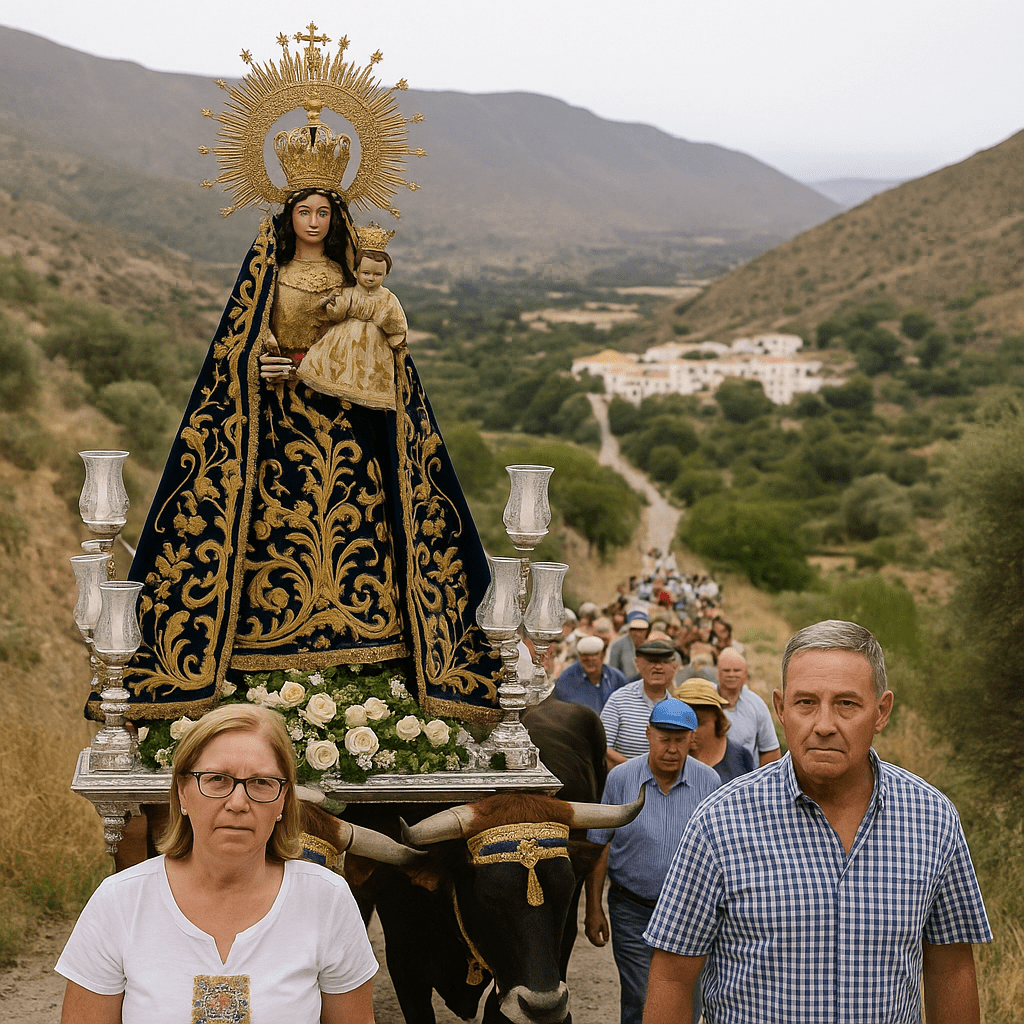
In the heart of the Sierra Alhamilla, the small village of Huebro celebrates one of its most significant annual events each spring: the pilgrimage in honor of the Virgen del Rosario. This age-old tradition blends spirituality, culture, and deep community roots, attracting not only local residents but also visitors from across the province.
The pilgrimage begins with a symbolic descent from Huebro to the church of Santa María de la Anunciación in Níjar. The image of the Virgin is carried on foot, accompanied by villagers dressed in traditional attire, ox-drawn carts, music, and tambourines echoing through the canyons. The journey of around four kilometers is both solemn and festive, uniting generations in a shared experience of faith and identity.
A Week of Religious Observance
Once the image reaches Níjar, it is placed at the altar for a full week of religious activity known as the Septenario. These seven days are filled with daily masses, candlelit processions, blessings of the sick, and prayers offered by local families. It’s a moment when the entire municipality pauses to reflect, participate, and reconnect with its roots.
Special attention is given to community participation: local children are presented in front of the Virgin, flowers are offered by neighborhood associations, and elderly residents are given seats of honor during the ceremonies. The church is often packed each evening, and the sound of bells and chants fills the surrounding streets.
Cultural Traditions in Full Color
The week is also a time for cultural expression. Outside the church and across town plazas, there are folk music concerts, flamenco performances, poetry readings, and artisan markets. Food stalls serve regional specialties like migas, tortas de chicharrones, and local wines, turning the religious festival into a celebration of Almería’s rural gastronomy.
Locals wear traditional dress throughout the week: women in embroidered shawls and floral skirts, men in sashes and wide-brimmed hats. It’s a living museum of Andalusian culture, where the past is not only remembered but embodied in the present moment.
The Return to Huebro
After seven days of devotion, the image of the Virgen del Rosario is returned to Huebro. This return journey is equally ceremonial, accompanied by singing, clapping, and final blessings. The Virgin is carried up the narrow winding path toward her hilltop chapel, where she remains for the rest of the year until the next spring’s festivities begin anew.
Upon arrival in Huebro, villagers celebrate with a community feast. Long tables are set in the village square, and families share homemade dishes while local musicians play. For many, this moment is the emotional highlight of the entire celebration — a reunion of generations, neighbors, and memory.
Nature, Silence, and Spiritual Reflection
Outside of the formal events, many visitors use this time to explore Huebro’s tranquil landscape. The area is ideal for short hikes, photography, and moments of peaceful reflection. The sound of water from ancient irrigation channels and the view over the Níjar valley offer a serene counterpoint to the busy celebrations.
Practical Information
The event is open to all, with no registration needed. Comfortable walking shoes are recommended for the descent and return. Níjar Town Hall usually publishes the full schedule of events a few weeks in advance, including the religious and cultural programming. Parking is available in Níjar, and shuttle services are sometimes offered for the return to Huebro.
For official updates and scheduling, visit the Hermandad de Nuestra Señora del Rosario de Huebro-Níjar.
Looking for more local stories? Visit our Almería news page or explore more Towns & Villages.
Almeria News
EasyJet launches new Liverpool–Almeria flight
Published October 25, 2025 | Category: News.
TL;DR: EasyJet will launch a new Liverpool–Almeria flight from October 28, strengthening air links between northern England and Andalusia’s Mediterranean coast — a region once visited by John Lennon himself.
EasyJet launches new Liverpool–Almeria flight linking the UK and Almeria
EasyJet has announced a brand-new Liverpool–Almeria flight, set to take off for the first time on October 28, 2025. The route will operate twice a week, on Tuesdays and Saturdays, giving UK travellers an easy and affordable way to reach one of southern Spain’s most authentic coastal regions.
The connection between Liverpool John Lennon Airport and Almeria Airport (LEI) forms part of EasyJet’s winter expansion plan, which also includes new services to Vienna and Kraków. It’s the first time Liverpool will have a direct flight to Almeria — opening the door for winter sunshine breaks and cultural tourism in this lesser-known corner of Andalusia.
Almeria Airport: a growing gateway to Andalusia’s southeast
Located just 9 km from the city centre, Almeria Airport handled nearly one million passengers in 2024 and continues to expand its network across Europe. Operated by AENA, the airport connects the province with major destinations in Spain, the UK, Belgium, and the Netherlands, while welcoming both scheduled and charter flights year-round.
In a statement on its social channels, Almeria Airport welcomed the new EasyJet route, calling it “an important step in improving connectivity with northern Europe and bringing new visitors to our coast and inland regions.” The twice-weekly flight will complement existing seasonal routes from London Gatwick, Bristol, and Manchester.
Boost for tourism and local businesses
According to Liverpool John Lennon Airport, the addition of Almeria offers travellers from across the North West and North Wales “an exciting new winter destination.” The area’s mix of peaceful beaches, desert landscapes, and traditional villages makes it a unique alternative to Spain’s busier resorts.
EasyJet’s UK Country Manager, Ali Gayward, noted: “We’re very pleased to expand our Liverpool base with these new routes. Almeria offers customers greater choice, outstanding value, and the warmth of Andalusian hospitality just a few hours away.”
Lennon’s Almeria: where music met the desert
Almeria’s connection to Liverpool stretches back to 1966, when John Lennon lived in the city while filming How I Won the War. According to the Museo Casa del Cine de Almeria, Lennon began developing ideas for what would become “Strawberry Fields Forever” while staying at the villa Casa Santa Isabel. The house is now a small museum honouring his creative time in the region, attracting Beatles fans from around the world.
That artistic chapter adds a cultural note to the new route — linking Lennon’s hometown with the Spanish city that briefly inspired one of The Beatles’ most iconic songs.
Flight details
- Route: Liverpool (LPL) – Almeria (LEI)
- Start date: October 28, 2025
- Days of operation: Tuesdays and Saturdays
- Flight time: Approx. 2 hours 55 minutes
- Airline: EasyJet
Tickets are now available through EasyJet’s official website. Seasonal promotions are expected during the winter launch period.
For more updates from across the province, visit our Infrastructure category.
Almeria News
Rally Costa de Almeria 2025 — 50th Rally: Route, Timetable & Entries
Published October 24, 2025 | Category: Events
TL;DR: The 50th Rally Costa de Almeria returns 31 Oct–1 Nov 2025 with 11 asphalt stages across Almeria’s mountains — see the full route and how to watch safely.
Rally Costa de Almeria 2025 — 50th Rally: Route, Timetable & Entries (Full Guide)
Table of Contents
What’s new (50th edition context)
2025 marks the golden anniversary of Rally Costa de Almeria. The event returns to Spain’s national asphalt series (CERA) and is expected to attract a deeper entry list. Timed distance is approximately 107.535 km, with a total route of 486.98 km including liaisons.
This post complements our earlier primer. For the original spectator how-to (picking a spot, what to bring), see: Rally Costa de Almeria 2025 — Full Spectator Guide.
Full stage list (times & distances)
Local time (Europe/Madrid). Subject to late bulletin updates by the organiser — always check the official noticeboard before travelling.
Friday, 31 October
- SS1 Vicar — AL-3400 — 4.915 km — 21:17
Saturday, 1 November
- SS2 Vicar–Enix — AL-3400 / A-391 — 8.7 km — 07:42
- SS3 Alhabia–Santa Fe de Mondujar — A-1075 / A-1075R1 — 6.2 km — 08:30
- SS4 Vicar–Enix — AL-3400 / A-391 — 8.7 km — 10:45
- SS5 Alhabia–Santa Fe de Mondujar — A-1075 / A-1075R1 — 6.2 km — 11:33
- SS6 Enix — A-391 — 14.4 km — 14:13
- SS7 Alboloduy — A-1075 — 7.3 km — 15:01
- SS8 Ricaveral — AL-3407 — 14.71 km — 15:23
- SS9 Enix — A-391 — 14.4 km — 17:54
- SS10 Alboloduy — A-1075 — 7.3 km — 18:43
- SS11 Ricaveral — AL-3407 — 14.71 km — 19:05
Totals: Timed distance ≈ 107.535 km · Total rally ≈ 486.98 km.
Schedule overview
- Friday, 31 Oct: Administrative checks & scrutineering, ceremonial start, and an evening opener in Vicar.
- Saturday, 1 Nov: Two loops through Enix, Alhabia–Santa Fe de Mondujar, Alboloduy and Ricaveral, with midday service and podium finish in the evening.
Parc fermé is expected in central Almeria (Parque de las Almadrabillas), with service/regroups typically in the Roquetas de Mar fairground area.
Spectator zones & safety
Choose elevated areas with clear sightlines and natural run-off. Arrive early, especially near village entries/exits where parking is tight. Stand behind barriers/tape and never on the outside of corners. Follow marshals at all times — stages reopen only after the sweeper car (coche escoba).
Indicative hotspots: short punchy viewing around Vicar; flowing hairpins above Enix; mixed rhythm from Alhabia to Santa Fe de Mondujar; tighter sequences by Alboloduy; multiple vantage points on the longer Ricaveral test.
Road closures, parking & access
Local roads close well before the first car. Re-opening depends on field size and incidents. Use designated parking; do not block resident or emergency access. Expect traffic bottlenecks between loops — plan one stage per loop rather than trying to chase the convoy.
Entries, documents & live results
- Entries (Lista de inscritos): updated by the organiser; late additions are common close to the event.
- Official documents: Noticeboard hosts the Programme (Programa Horario), Roadbook and Rutometro — check late on Thursday/Friday for any bulletins.
- Live timing: will be linked once the provider is confirmed on the official noticeboard.
Insider tips for visitors
- Base & services: Service areas are typically set close to urban Almeria/Roquetas for easier logistics (fuel, food, facilities).
- Weather: Coast is mild; hill sections can be cooler and windy. Bring layers, sun protection and a headlamp for evening stages.
- Connectivity: Signal can drop in canyons — download offline maps, carry a power bank.
- Cash & supplies: Some pop-up vendors are cash-only. Stock water and snacks if you plan to stay put between loops.
Official links
- Organiser — Participants & Noticeboard (50th edition) — entries, programme, roadbook & rutometro.
- RFEDA — National calendar (CERA) — confirms 31 Oct–1 Nov dates.
For more updates from across the province, visit our Events category.
-

 Almeria News7 days ago
Almeria News7 days agoRed Prawn Festival Garrucha 2025 Confirmed | Programme, Dates & Events
-

 Almeria News4 days ago
Almeria News4 days agoEasyJet launches new Liverpool–Almeria flight
-

 Events5 days ago
Events5 days agoAlbox All Saints Fair 2025 — Five Days of Music, Food & Tradition
-

 Towns & Villages6 days ago
Towns & Villages6 days agoAlmeria province real estate – 42 homes for sale from €12,900 by Solvia



















